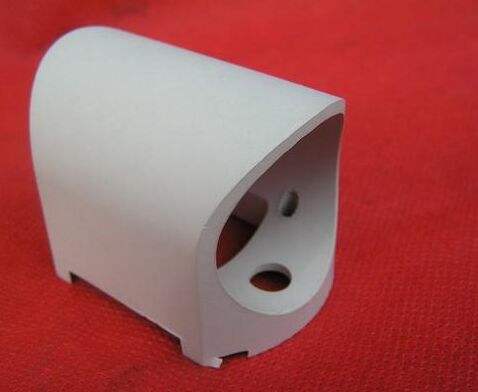Titanium alloys are widely used in aerospace, chemical industry and biomedical fields, but their low hardness, poor anti-wear and anti-friction function restrict their use. Therefore, the use of surface modification skills to improve the appearance function of titanium alloys has attracted much attention. The most commonly used method is chemical treatment or chemical oxidation to improve the contact force between the matrix and the coating and the corrosion resistance of the surface. However, the oxide film obtained by chemical oxidation is thin and has poor corrosion resistance and durability. The oxide film on the surface of titanium alloy makes it difficult to realize electroless plating and electroplating on titanium. In contrast, micro-arc oxidation is widely considered as the most promising method for surface treatment of titanium alloys.

Micro-arc oxidation is a process of in-situ growth of ceramic oxide film in electrolyte solution (usually weak alkaline solution) by applying high voltage (DC, AC or pulse) on the surface of data. This process is the result of synergistic effect of physical discharge, electrochemical oxidation and plasma oxidation. This skill is developed on the basis of general anodic oxidation skills. Further improvement of voltage will lead to the appearance of spark discharge in the anode when the voltage exceeds Faraday area and reaches the breakdown voltage of the oxide film. The ceramic oxide film is formed on the surface of the data, which makes the plasma oxide film both high-functioning and strong. The contact force between the anodic oxide film and the matrix was maintained. These characteristics make it a hot topic in the field of appearance engineering skills. Using micro-arc oxidation technology, Harbin University of Technology of China added cobalt acetate into the electrolyte, thus forming a heat shock resistant ceramic film on TC4 alloy. The connection between the film and the substrate can be higher than 10 MPa. The alloy remains stable under 40 cycles of thermal sensation, indicating that the TC4 alloy treated by micro-arc oxidation has excellent properties. Heat shock resistance.
In recent years, micro-arc oxidation (MAO) coatings formed in electrolytes containing calcium and phosphorus have attracted researchers’interest in bone transplantation due to their high wear resistance, corrosion resistance and biocompatibility. In Korea, nanocrystalline hydrogen-based apatite ceramic coatings were formed on the surface of pure titanium by micro-arc oxidation. The crystallinity and biocompatibility of the nanocrystalline apatite ceramics in the coatings are very high, showing the potential of application in plastic surgery and dental repair skills. The bio-active thin films containing calcium and phosphorus were prepared by micro-arc oxidation at Xi’an Jiaotong University, China. The results show that the thin films are composed of anatase titanium dioxide and rutile titanium dioxide, which are in the form of fine inner layer and porous outer layer; the ratio of calcium and phosphorus atoms in the film increases gradually from inside to outside; and the film can be transformed into a bio-active thin film containing calcium and phosphorus after hydrothermal treatment. Bioactive Titanium Dioxide Layer of Hydrogen-based Apatite. The rutile film has common electrical and mechanical functions.
Because of its excellent physical function and biocompatibility, beta-Ti is considered as the next generation of plastic surgery and dental metal. In order to improve the bone composition of beta-Ti and human bone arrangement, micro-arc oxidation can be used to improve the biological activity of beta-Ti. The titanium dioxide ceramic film was prepared by micro-arc oxidation on beta-Ti alloy in Taiwan, China. The experiment was carried out in vitro and implanted into the thigh tip of Japanese mice. The results show that the titanium dioxide film is formed, which has a strong connection with the base and shows a better bone formation ability than pure titanium. It is more suitable for medical implantation correction.
